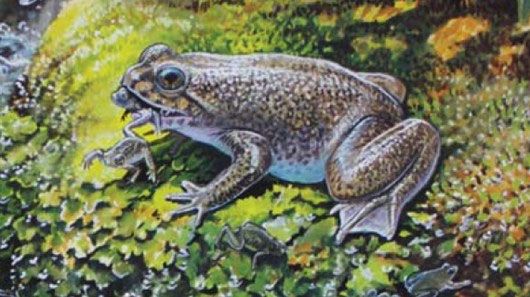Revive the extinct oral toad
Australian scientists step by step revitalize the oral, extinct toads from the 80s.
Australian scientists have succeeded in reviving the genome of an extinct toad. This project is called 'Lazaus project' . The project members have implanted a nucleic cell obtained from tissue of the 70s of last century and kept it in deep freezing conditions in the eggs of a relative Within 40 years, some eggs have begun to divide and grow to the fetal stage, and tests have shown that those dividing cells contain the genes of this extinct toad.
This toad species is scientifically known as Rheobatrachus silus , one of two oral reproductive toad species, mainly found in Queensland, Australia. Both of these toad species have become extinct since the 1980s and are the most unique toad species in the world.

Pictures of oral toad species introduced by Australian scientists.
After the egg is fertilized by the male, the female will swallow it until it hatches into a tadpole. This tadpole will then grow in the child's stomach for about 6 weeks before they are 'vomited' by their mother. During this time, my mother cannot eat anything.
Unfortunately, not a single kidnapper survived for more than a few days, but this is considered an encouraging success, paving the way for the revival of extinct animals, such as mammoths, Cuban red-tailed macaws and the giant flying bird of New Zealand.
'We are confident that the immediate difficulties are only in terms of technology, not biological and we will succeed. This technology can be considered as a positive conservation tool, as the number of amphibians in the world tends to decrease ' - Professor Mike Archer, University of New South Wales, Sydney, the head This project said.
- Species of extinct to survive in the laboratory
- Tail pieces can help revitalize extinct bison 12,000 years
- About to revive the extinct Persian tiger
- Why does science have to spend tens of years just to revive mammoths?
- 11 strange frogs and frogs: Vietnam has 2 representatives
- The ambition to revive the extinct breed
- What do scientists do to revive dinosaurs?
- Toad Cane - The world's largest toad species
- Palawan's small toad was re-exported after nearly half a century
- Efforts to revive extinct parrot species in the wild
- Discovered two new species of moth toad in Vietnam
- 7 signs of 'sneaking' on oral cancer
 Animal 'suffering' after hibernation
Animal 'suffering' after hibernation Why do goats climb well?
Why do goats climb well? Scientists were surprised to see chimpanzees eating turtles
Scientists were surprised to see chimpanzees eating turtles Giant catfish died deadly due to drought in Thailand
Giant catfish died deadly due to drought in Thailand